"Success!" "Beyond our expectations!"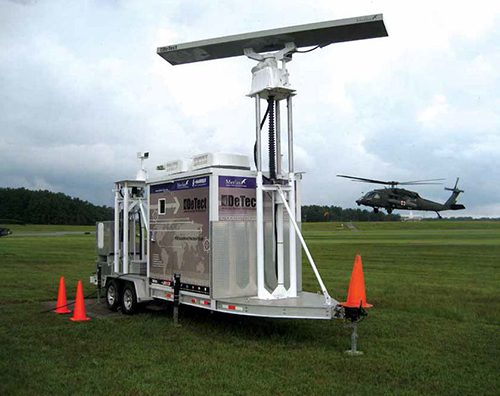
That was the enthusiastic reaction as stakeholders and other curious observers watched the initial demonstration of an unmanned air traffic advisory system at Raleigh County Memorial Airport (BKW) in mid-July. While many are quick to dub the system a "virtual tower," its developer is quick to point out an important distinction: The Synthetic Air Traffic Advisory System (SATAS) advises pilots of potential conflicts in the airspace and on the airfield so they can act accordingly; it does not direct pilots the way actual air traffic controllers do.
Comprised of readily available technologies, the unmanned system is squarely aimed at enhancing safety at airports without control towers. While more research and work needs to be done before the system can be rolled out, the initial success of SATAS is testimony to the creative vision of Dr. David Byers, president of Quadrex Aviation, and the persistence of the Raleigh County Airport Authority and BKW Airport Manager Tom Cochran.
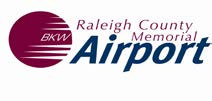 factsfigures factsfigures
Project: Synthetic Air Traffic Advisory System |
Don't Take No for an Answer
It all started several years ago, in Beckley, WV.
With 58 based aircraft and two industrial parks flanking the airport on opposite sides, BKW is one of West Virginia's largest airports for corporate traffic. The facility also offers commercial service to Washington, D.C., via United Express, but its general aviation traffic has increased significantly over the years.
"Our primary focus and paramount thought here is safety," Cochran notes. "However, we are the only commercial service airport in the state without a control tower."
Yeager Airport, about 60 miles north in Charleston, WV, provides a measure of air traffic control to BKW, but the mountainous terrain surrounding the airport limits coverage to above 5,000 feet.
"Charleston can give flight clearance to aircraft flying into our airport based on what they see above 5,000 feet, but from 5,000 feet on down, pilots are on their own," says Cochran. "There could be wildlife or another aircraft on the runway creating an unsafe condition."
Further complicating matters is BKW's "one-in/one-out" format. "When a flight comes in, the airfield is closed until that aircraft's flight plan is closed out," Cochran explains. "We've had situations where the pilot who lands forgets to close out his flight plan, and a flight behind him is low on fuel or perhaps experiencing icing conditions and needs to land immediately. There's no one to direct him. We can't do it – we don't have the equipment, and we're not air traffic controllers. This puts limitations on the airport and creates unsafe conditions."
 With such safety concerns in mind, Raleigh County Airport Authority added a control tower to its 2009 master plan and hired Quadrex Aviation to perform a cost-benefit analysis.
With such safety concerns in mind, Raleigh County Airport Authority added a control tower to its 2009 master plan and hired Quadrex Aviation to perform a cost-benefit analysis.
At a cost of approximately $2.5 million to construct the tower and $500,000 annually to staff it, BKW did not qualify for the FAA Contract Tower Program.
Not one to turn back when he runs into a brick wall, Cochran decided to walk around the obstacle instead. When a tower didn't seem possible, he asked Byers for ways to improve safety at
the airport.
As it happened, Byers had long been kicking around an idea for a virtual unmanned advisory system – the configuration subsequently named SATAS.
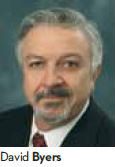 "I had this idea noodling around in my head. It's not a unique idea by any stretch," he modestly reflects. "But over the years, I became intrigued with the idea of taking off-the-shelf systems and assembling them to do pretty much what a control tower would do. Not everything, but a lot of things a control tower would do. Essentially, the system would provide traffic advisories to aircraft arriving or departing an airport."
"I had this idea noodling around in my head. It's not a unique idea by any stretch," he modestly reflects. "But over the years, I became intrigued with the idea of taking off-the-shelf systems and assembling them to do pretty much what a control tower would do. Not everything, but a lot of things a control tower would do. Essentially, the system would provide traffic advisories to aircraft arriving or departing an airport."
While Byers emphasized that there were no guarantees the system would work, Raleigh County Airport Authority was intrigued enough to stake Quadrex Aviation with $75,000 to study the concept's feasibility and bring a prototype to the airport for testing.
New Applications for Existing Technologies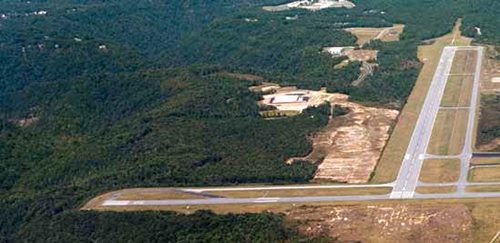
The goal of the research was to investigate the applicability of available technologies to enhance operational safety at airports that do not have or cannot afford traditional air traffic control services, yet have substantial air traffic. Byers, who also teaches airport management and development at the University of Nebraska's Aviation Institute, emphasizes that the system is not air traffic control, in that it is not designed to direct pilot activities. Instead, SATAS advises pilots of potential conflicts in the airspace and on the airfield so they can determine the appropriate action to take.
Byers used data from existing radar to map flight paths, essentially by connecting the dots. Because radar visualizes activity in a particular airspace with "blips" that are translated into time-stamped x and y coordinates, the blips can be connected to create a flight track.
 "I can do the math to project where an aircraft is going to be in, say, five minutes," he explains. "Then I can do that with another aircraft and determine whether their paths may cross within a specific time frame. If the system could recognize that this target and that target are in potential conflict, then trigger an advisory to alert the pilots of the situation so they can take appropriate actions, safety is enhanced."
"I can do the math to project where an aircraft is going to be in, say, five minutes," he explains. "Then I can do that with another aircraft and determine whether their paths may cross within a specific time frame. If the system could recognize that this target and that target are in potential conflict, then trigger an advisory to alert the pilots of the situation so they can take appropriate actions, safety is enhanced."
Pilots, he stresses, are still responsible for their own separation. "All I'm doing is letting the computer do the math, by writing the algorithms that define airspace rules such as 'I don't want anybody within two miles of anyone else without one or both aircraft knowing about the presence of the other.' We're not inventing anything new, hardware-wise," he notes. "Similar technology is being used today to track ultralights crossing the border illegally."
 The system consists of several off-the-shelf components: X-S band surveillance radar by DeTect, multisource surveillance receivers by PASSUR Aerospace, and high-definition thermal airfield surveillance cameras by American MicroTech.
The system consists of several off-the-shelf components: X-S band surveillance radar by DeTect, multisource surveillance receivers by PASSUR Aerospace, and high-definition thermal airfield surveillance cameras by American MicroTech.
DeTect's HARRIER ASR is an active air surveillance Doppler radar system designed to detect cooperative and non-cooperative targets. The product was designed primarily for small third-world airports without air traffic control that need situational awareness of airspace, and for industrial and border security applications.
The company developed a custom display that was ported out through a Web interface so users could view the data at the July demonstration. Chief Executive Officer Gary Andrews was pleased with how the radar performed: "We were getting very good performance … at a 12-nautical mile range. The whole project went off very well and we were getting extremely good detection, particularly in light of the terrain around the airport. All the data integrated well, and it was an unqualified success. It demonstrated the possibility of using this type of technology to provide situational awareness for a small airport."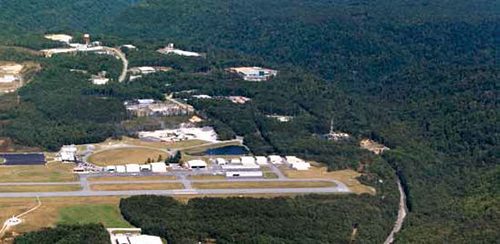
PASSUR Aerospace's Web Tracker(tm) is a visual flight tracking technology that integrates both airborne and surface tracking into a single application, allowing users to move among surface, terminal airspace and en route flight tracking on a single screen without having to adjust for data sources. This is accomplished through the integration of multiple datasets, including the PASSUR radar surveillance network, ASDE-X and ADS-B.
"This project is not about active air traffic control," emphasizes William Leber, vice president of PASSUR's Air Traffic Innovations. "Our role is to provide secondary surveillance, mostly through transponder interrogations, while DeTect provides primary surveillance."
Although PASSUR did not install sensors at BKW for the July demo, a company representative showed attendees how the system works in other areas of the country. PASSUR's privately owned network of sensors at more than 150 U.S. locations pinpoints where aircraft are, with data updated every 4.6 seconds, reports Leber.
"This application would be a new capability in our existing network of secondary surveillance," he notes. "We do not currently provide air traffic advisories, but it is very doable – a new application of existing technology. It's a matter of writing algorithms for creating advisories and creating sophisticated filters to show what pilots need in their particular airspace. It's 2013 and time for a more sophisticated approach to air traffic situational awareness for pilots."
The final element for the demonstration was the installation of high-definition surveillance cameras to visually sweep the airfield.
"That was the missing component," says Byers. "These cameras use Doppler radar to sense activity on the airfield." Such coverage, he notes, could be especially helpful at night, to identify wildlife or other obstacles, such as recreational all-terrain vehicles intruding on the airfield. "We can then alert a pilot who is on a short final approach that there's an object on the runway, which gives him the information he needs to make important decisions," he continues.
What's Next
While the July event succeeded in demonstrating the benefits of the various technologies, the next challenge is getting them to communicate with one another.
"It all needs to get fed into a common database with a common platform and a common language," Byers explains. "We have the visual aspects of the system and the database. (At the demonstration) we captured the data and showed observers what it looked like in real time."
Tabatha Cox, a former military air traffic controller who now works part time at BKW, was stationed to observe the airfield from above throughout the demonstration. And to everyone's delight, Cox confirmed that what she saw out the window "absolutely" matched the data portrayed on screen.
According to Byers, another crucial step is developing the advisory process, so the system can provide simple radio transmissions to pilots. "This is what we don't have yet," he relates.
Byers estimates that additional research to work out such bugs, plus installation of a prototype SATAS, will cost about $3 million. Given the amount, he's at a frustrating juncture. As it stands, the system is a promising alternative for small airports that need air traffic control but cannot afford it; but current sequestration makes government funding to bring the concept to fruition especially hard to secure.
"I've been working with three other airports over the past three years that have the numbers to qualify them for a tower, but the FAA … has apparently taken the position that they don't want new towers coming into the program," reports Byers. "That does not make the problem of managing congested airspace go away. At the same time, they (FAA officials) may be looking at culling out towers at some of the low-activity airports."
Once fully developed, SATAS could potentially help budget-constrained airports with 24/7 tower operations reduce personnel costs by cutting shifts during low-traffic periods. "If they had a system like this in place, the controller could flip the system on and let it run until a controller shows up in the morning," explains Byers.
Currently, SATAS stakeholders are waiting for a report from an FAA representative who attended the demonstration in July. West Virginia Senator Jay Rockefeller and Congressman Nick Rahall have pledged their support in securing federal grants to fund more research for the project. In addition, they are also pursuing the private sector for financial support, which they believe would allow Byers to move forward more quickly, with fewer bureaucratic entanglements.
"It's all about safety," Cochran summarizes. "We want that and certainly pilots want that. They aren't looking for more regulations, but they do want to be safe. And we want to provide them with the tools that will keep them safe."


